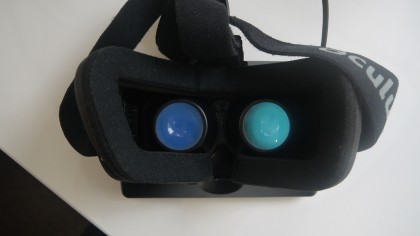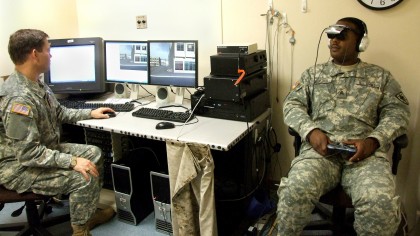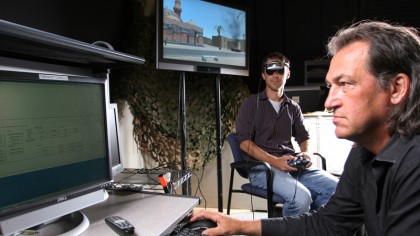Five incredible ways Oculus Rift will go beyond gaming
From medicine to military applications
3. 3D Design
Sat behind the exploding potential of virtual reality in the world of next big things is 3D printing. One developer who's seeking to merge the two is Sixense with its tantalising MakeVR concept.
The company's Vice President of Marketing Steve Nguyen has seen a steep drop in the price of 3D printing, but despite this he says "people still have a hard time creating".

It can be very hard to 3D model using a 2D interface with a mouse and keyboard. And they're also difficult to learn. MakeVR seeks to be an all-inclusive means of 3D modelling.
"That group who wants to make something but doesn't necessarily have the timescale, inclination or money to go off and learn these tools," explains Nguyen. "We call it 3D modelling for everyone."

Their proprietary software and bespoke STEM System caters for both freeform and precision modelling. As its name suggests, MakeVR was created with the Oculus Rift in mind.
"It was designed for full immersion," says Nguyen. "It's fun to do but it also adds to productivity. When you look down at your hands, they're exactly where you'd expect them to be. Acquiring objects is second nature. When you have 3D actions with 3D results, everything works perfectly."
Sixense's MakeVR Kickstarter begins on February 5.
Sign up for breaking news, reviews, opinion, top tech deals, and more.
4. Anxiety and phobia treatment
The Oculus Rift is also finding its feet in the world of cognitive behavioural therapies. Fernando M Tarnogol is devising the Anxiety Management Virtual Reality Platform, conceived for the treatment of common specific phobias and anxiety disorders, utilising existing therapy protocol, such as acrophobia, arachnophobia, claustrophobia and agoraphobia.
"Anxiety disorders and phobias are a real problem that affects one in 60 people in the US. Studies have proved that virtual reality therapy can be as effective as in-vivo exposure - being exposed to real heights, for instance - or imaginary exposure."
Tarnogol says she sees the benefits of VR as innumerable: "The person doesn't have to be exposed to the real stressor, which is usually a barrier to entering treatment; the person can disengage immediately from the situation should it become unbearable, and the environment and conditions can be structured and tailored to each case."

"Up until now, the cost of the hardware to enable these types of treatments has been prohibitive outside academic or well funded environments," she tells us. "With the advent of Oculus Rift, this barrier will be completely erased, opening the door to independent professionals, mental health organisations and institutions who were previously unable to use this technology."
AMVR is not being aimed at the general public, since the software is a tool intended for use by professionals. "There is still lots of research to be made in this area before we even attempt to try something like this. Still, if complemented with the guidance of a professional, AMVR could potentially be used as 'homework' in between sessions."
5. Post-traumatic stress disorder
Virtual reality has further medical efficacy when it comes to assisting in treatment of combat-related post-traumatic stress disorder, as shown by Dr Skip Rizzo and the work done at the University of Southern California's Institute of Creative Technologies.
Prolonged Exposure has proven an effective therapy, through the gradual recollection of the traumatic event to allow patients to process it, however one of the key symptoms of PTSD is an inability or refusal to recall such an occurrence.

Virtual Reality Exposure Therapy, the reconstruction of events in a virtual environment controlled by the patient, has proven remarkably successful - especially within the Virtual Iraq/Afghanistan VRET System.
Using an Emagin Z-800 3D visor rather than an Oculus Rift, research showed drastic decreases in PTSD symptoms, one finding 80% of patients no longer classifying as PTSD sufferers.
This system was limited but held great promise, and in 2011 Project BRAVEMIND was launched with Unity-based software that increased the number of actionable scenarios as well as vehicles with far higher fidelity textures and animations.

The system seeks to incorporate the Oculus Rift once the high-definition version is available, expanding VRET to include scenarios specifically for military sexual trauma – taking care not to recreate sexual assaults, but the context in which it occurred – and combat medics.
- DK2 is finally shipping! Read our hands on review with the latest Oculus Rift
- 1
- 2
Current page: From 3D design to post-traumatic stress treatment
Prev Page Architecture and education